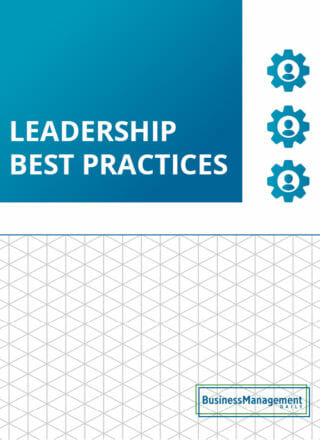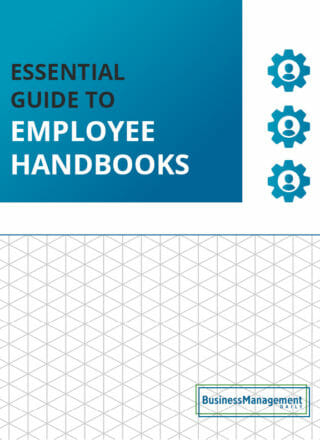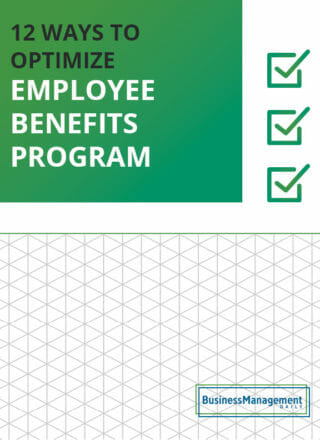Mentorship programs benefits growth
Mentoring’s impact: Doubling profits and expanding reach
Did you know that median profits for U.S. Fortune 500 companies with mentoring programs are twice those without mentoring? No wonder MentorcliQ’s 2024 Mentoring Impact Report found that a whopping 98% of U.S. Fortune 500 companies now visibly provide mentoring programs to their employees in some capacity – up from 84% in 2020.
Mentorship programs are structured relationships in which an experienced individual, known as the mentor, provides guidance, support, and advice to a less skilled individual, referred to as the mentee.
These programs aim to facilitate professional growth, personal development, knowledge transfer, and career advancement. They can occur within organizations, industry associations, educational institutions, or informally.
Let’s examine what is involved in successful mentorship programs and their benefits to organizations and individuals.
Types of mentorship programs
-
Informal
Individuals enter informal mentoring relationships in various ways. A person might meet a potential mentor through work, an industry event, an alumni gathering, or a professional association. Some develop a connection through LinkedIn or other online platforms.
Informal mentorships often develop naturally, with the involved parties stating that they “clicked.” While you may need to put in some effort to get things going, defined goals and timelines are not in place.
When you identify someone with the kind of career or skills you’d like and who seems approachable, break the ice. Try something like, “Maria, would you have a few minutes to grab a cup of coffee? I’d love to learn more about your work and how you’ve achieved success in the industry.
Although flattered, some people may be too busy to mentor or simply uninterested. Move on. When you find an arrangement that works, grow the relationship slowly and steadily.
-
Formal
Formal mentoring programs are structured, goal-oriented arrangements. Program participants typically follow a predetermined curriculum, which outlines the subjects to be discussed during their sessions. Metrics are tracked to evaluate effectiveness.
Formal programs often begin with potential mentors and mentees completing profiles. The matching process occurs through software that utilizes a bias-free algorithm or is manually conducted by the mentoring program manager.
Matched pairs then meet and talk according to the mentorship program’s guidelines. Administrators gather data on the relationships and track progress toward goals. When the program cycle ends, these leaders evaluate the effectiveness of the mentoring initiative.
Much of the effectiveness of a formal program depends on forethought. Throwing people together and simply expecting them to bond or to reach desired objectives does not often work. Plus, sitting around uncomfortably with a stranger, not knowing what to say, kills enthusiasm.
While every mentorship program is different, success often comes from following these key steps:
-
Define program goals and objectives.
What does the organization hope to accomplish? Are you looking to fill gaps in your skill development? Are you trying to enhance professionalism and other soft skills? Participants should understand the purpose.
-
Match mentors and mentees effectively.
Refrain from random pairings. Consider using matching software to connect people with similar interests. Both sides will benefit more from the arrangement when they share some commonalities.
-
Provide training programs and resources.
Don’t expect mentoring to just come naturally. Educate mentors and work on their communication skills. Help them understand their role. Instruct them where to turn if they have questions or need additional support.
For instance, many leaders are familiar with SMART goal setting. However, this framework does not always translate well to issues brought up during mentoring.
Mentors may benefit from learning and implementing the REAL format instead. These are the goals that are:
Relevant – important and worthwhile to the mentee
Experimental – focused on professional development activities that will lead to greater insights
Aspirational – concentrated around areas of desired development
Learning-based – focused on gaining capabilities
- Establish clear guidelines and expectations.
Answer the four W’s and the H. Participants need to know what they are signing up for.
- Monitor progress, measure success, and prioritize feedback
Define what success looks like, both quantitatively and qualitatively. If outcomes were less than hoped for, look for reasons why. Ask for constructive criticism to learn what can be improved in your mentoring program for the future.
- Traditional vs. non-traditional
Most mentoring relationships involve two people meeting one-to-one – a seasoned mentor and a developing mentee. In addition to this traditional arrangement, other types of mentoring can exist, including:
- Group mentoring, where one mentor works with multiple mentees
- Reverse mentoring, which flips the roles by young people serving as mentors who can offer fresh perspectives and unique insights to senior employees
- Distance mentoring, where the parties communicate via technology rather than meeting in person
- Peer mentoring, which pairs people at similar job levels to support one another
Level up your career: The personal advantages of mentorship
Some employees participate in mentorship programs because they believe it will enhance their reputations with higher-ups. However, many other reasons exist for seeking formal or informal mentoring relationships.
Experienced mentors shorten your learning curve. They impart knowledge and help you build competencies. They know the ropes and can assist with everything from navigating office politics to achieving a better work- life balance.
Good mentors rank among your best supporters. They act as sounding boards and cheerleaders for your career development. Their candidness and honesty bring additional perspective to your decision-making, and their belief in you can build confidence.
Mentors also benefit from a meaningful relationship, which includes learning from you. They have the opportunity to develop their leadership skills and become more effective coaches, which can ultimately support their own career goals. Many particularly enjoy the chance to make a lasting contribution to their industry or company by serving as role models to up-and-coming talent.
Building a stronger team: How mentorship drives business success
What can implementing a mentorship program do for your company? As mentioned earlier, increased profits are a potential outcome.
Forming connections enhances job satisfaction, loyalty, and a sense of belonging. This bodes well for employee engagement and employee retention. High retention rates save companies the time and money involved in finding and training replacements, which is especially beneficial in this time of low unemployment.
Mentorship also assists with leadership development and succession planning. Promising employees receive more insight and guidance into future roles within the company. They are better prepared when their time comes to move up.
Plus, mentoring programs build a stronger company culture. They bring together people from all levels and promote a spirit of working toward the overall good.
Showcasing mentoring programs to job candidates can give you a competitive edge. Applicants like it when employers take an interest in employee development.
Mentoring in ERGs
Employee Resource Groups (ERGs) are voluntary organizations that bring together employees who share similar characteristics or life experiences within a company. For instance, the manufacturing giant Caterpillar – a company with a national reputation for successful mentoring programs – has 14 Employee Resource Groups (ERGs), including ones centered on specific ethnicities, gender orientations, and military backgrounds.
With an emphasis on supporting one another and addressing specific challenges that members face, ERGs provide a fertile environment for mentoring relationships to develop. Employees seeking potential mentors often find them through participation in the group.
Tips for a positive mentoring experience
Successful mentor-mentee matching feels terrific on both sides. To keep things running smoothly, consider the following:
Ambitious mentees sometimes come on too strong. They may take too much time or want their mentor to make the decision for them. They might expect instant access to the person’s connections, not realizing the mentor is under no obligation to share.
Realize that solid relationships take time to develop. Try not to overwhelm or appear overly needy. Consider the mentor a valuable contributor to your learning and development rather than an “inside ticket” or the solution to all your problems.
Similarly, mentors need to be mindful of their actions and attitudes. Some take on mentees without a real commitment to check-ins. Infrequent or half-hearted participation impairs bonding.
On the flip side, mentors sometimes become too invested. They hijack their mentee’s career path rather than serve as a guide. They also may view that individual’s success as a reflection of their worth.
Good mentors realize that mentees must make their own choices and work toward their career goals. Offering opinions and suggestions is one thing; micromanaging someone’s career is quite another. Stay in your lane!






